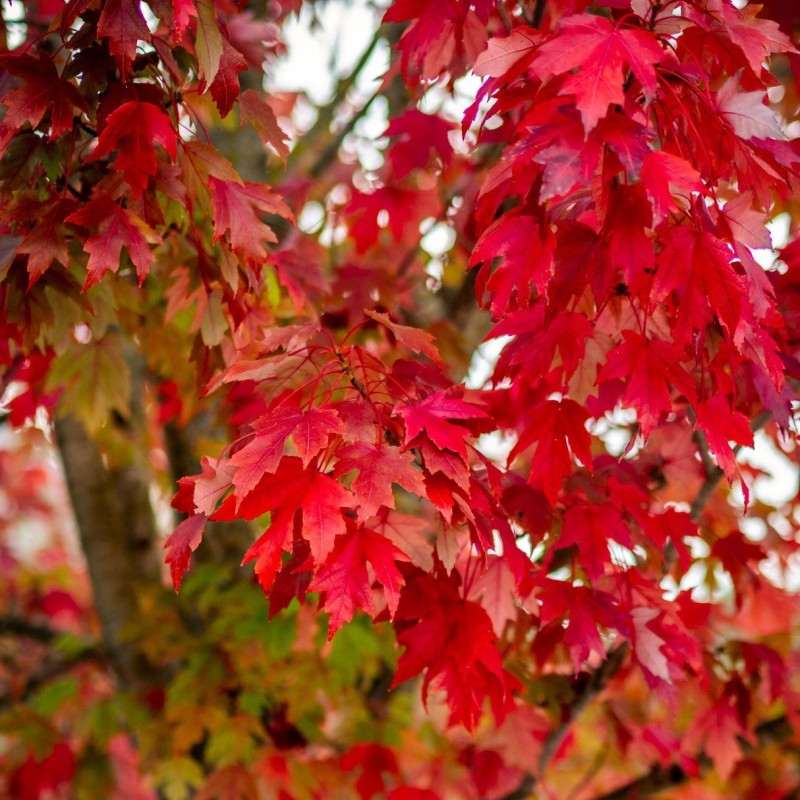Acer rubrum, the red maple, also known as swamp maple, water maple, or soft maple, is one of the most common and widespread deciduous trees of eastern and central North America. The U.S. Forest Service recognizes it as the most abundant native tree in eastern North America. The red maple ranges from southeastern Manitoba around the Lake of the Woods on the border with Ontario and Minnesota, east to Newfoundland, south to Florida, and southwest to East Texas. Many of its features, especially its leaves, are quite variable in form. At maturity, it often attains a height around 30 m (100 ft). Its flowers, petioles, twigs, and seeds are all red to varying degrees. Among these features, however, it is best known for its brilliant deep scarlet foliage in autumn. Over most of its range, red maple is adaptable to a very wide range of site conditions, perhaps more so than any other tree in eastern North America. It can be found growing in swamps, on poor, dry soils, and almost anywhere in between. It grows well from sea level to about 900 m (3,000 ft). Due to its attractive fall foliage and pleasing form, it is often used as a shade tree for landscapes. It is used commercially on a small scale for maple syrup production and for its medium to high quality lumber. It is also the state tree of Rhode Island. The red maple can be considered weedy or even invasive in young, highly disturbed forests, especially frequently logged forests. In a mature or old-growth northern hardwood forest, red maple only has a sparse presence, while shade-tolerant trees such as sugar maples, beeches, and hemlocks thrive. By removing red maple from a young forest recovering from disturbance, the natural cycle of forest regeneration is altered, changing the diversity of the forest for centuries to come.

